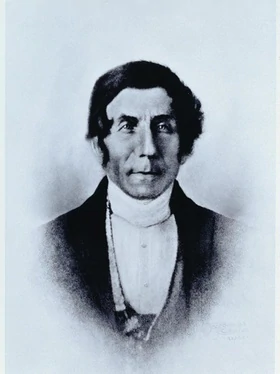Chocolate History and some facts
Table of Contents
What is your expression after hearing the word Chocolate? Do you crave it? It is something that gives instant refreshment to your brain. You’ll feel happy inside after having even a small piece of it. People have it because of its amazing taste but there are some scientific reasons behind this happiness. Scientists get findings after so much research that whenever we eat chocolates, our brain releases dopamine hormone and passes happy and active feelings to neurotransmitters. We all know that releases of dopamine give us joy and happiness. So it also lessens the stress level and we feel energetic and active after having them.
Now, aren’t you excited to know the most energetic and active people who live in which country eat chocolate the most? If so then it’s Switzerland, one of the most beautiful mountainous countries in Europe. They are renowned because of their chocolates and Swiss watches. It’s called the heaven of chocolates. Do you know Nestle, Lindt, Toblerone, all famous chocolate brands are all Swiss?
History of Chocolates
This country has 200 years back history when Francois-Louis Cailler devised a method for transforming grittier cocoa beans into a firm, smooth chocolate bar in 1819.

Rudolph Lindt finally refined the smoothing process by using a machine he dubbed the conch to add cocoa butter. His countryman Charles-Amédée Kohler introduced hazelnuts to chocolate in 1830. The Toblerone bar was created by Jean Tobler in the late 1860s. In 1875, Daniel Peter discovered how to blend the cocoa powder with local milk to make milk chocolate, which became an instant hit. Kohler, Peter, and food magnate Henri Nestlé finally teamed up to form the Swiss Chocolate Society, which later became the Nestlé corporation. Consumers in Switzerland consume more than 23 pounds of the country’s most famous commodity each year.
Another element contributing to Switzerland’s high chocolate consumption is its prosperity. Because chocolate is a luxury item, few cocoa-producing countries are significant chocolate eaters. Cocoa output is led by the Ivory Coast, Indonesia, Ghana, and Nigeria, all of which have per capita GDPs significantly below the worldwide average. In comparison, rich Western Europe accounts for only 6% of the global population but consumes 45% of the world’s chocolate.
Enthusiastic Chocolatiers
In short, while some ascribe Motown’s prominence to its huge natural resources, its importance in manufacturing was most likely due to the historical occurrence of a handful of influential industrialists working there. Ransom Olds and other automotive pioneers set up shop in Detroit, as did Henry Ford. Their businesses functioned similarly to today’s dot-coms, allowing personnel and ideas to cross-pollinate. The same mechanism explains how, after a century of outstanding invention, the Swiss came to dominate the chocolate world.
Chocolate tour
Chocolate tasting trips are available in Zurich, Bern, and Basel, among other cities in Switzerland. Lavaux is home to one of the more interesting and enjoyable chocolate excursions. Travelers can take a stroll along this route to learn more about the history of this sweet temptation while also sampling Grand Cru pralines along the way! The Funky Chocolate Club in Interlaken is also a great place to learn about chocolate production.
They consume an all-time high of 11 kilograms of It per year! It’s no surprise they’re a cheerful bunch. It is a well-known brain stimulant and has incredibly relaxing qualities. So grab a bar of Swiss chocolate, elevate your mood, and relax to take your mind off the sad news and thoughts these days!
The reason why we should eat chocolate
Magnesium
It is a micronutrient that many people, especially women, are lacking in. It isn’t the most magnesium-rich food on the list, but it is the only one in the top ten that has been linked to the production of dopamine in the brain. You should at least 30 to 50 g of chocolate to maintain a healthy lifestyle.
Mood booster
It is like a mood booster. Whenever you feel inactive, have a piece of It. Releases of dopamine will help you to be energetic.
low blood pressure
If you are suffering from low blood pressure, you can have a piece of it. It’ll control your blood pressure and will keep it normal.
Soluble fiber and mineral
It is high in soluble fiber and mineral content. To give you an idea, a 100 g bar of 70-85% dark chocolate has 11 grams of fiber, 67 percent of the RDA for iron, 58 percent of the RDA for magnesium, 89 percent of the RDA for copper, and 98 percent of the RDA for manganese. Potassium, phosphorus, zinc, and selenium are all abundant in this fruit. The lower the sugar, the higher the percentage of cocoa.
Protect your skin
It could help to protect your skin from the sun’s rays. Dark chocolate may also provide skin-beneficial bioactive chemicals. Flavonols can protect the skin from UV damage, promote skin density and hydration, and improve blood flow. The minimal erythemal dose (MED) is the number of UVB rays needed to elicit skin redness 24 hours after sun exposure. After consuming dark chocolate high in flavanols for 12 weeks, the MED in one trial of 30 persons more than doubled. So, if you’re going to the beach, you might want to stock up on dark chocolate in the weeks and months leading up to your trip.
Most Chocolate Consumer in the world
According to a new study published in The New England Journal of Medicine, a country’s chocolate intake is substantially linked to the number of Nobel Prizes its residents receive. Switzerland consumes the most it and comes second in terms of laureates per capita, according to the author’s findings. The climate of Switzerland is not conducive to chocolate production.
